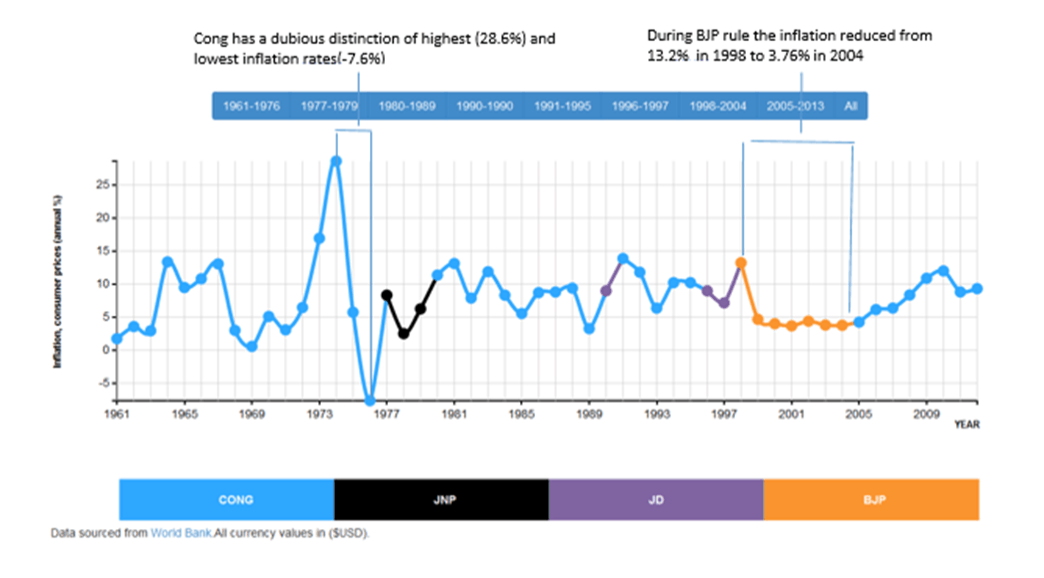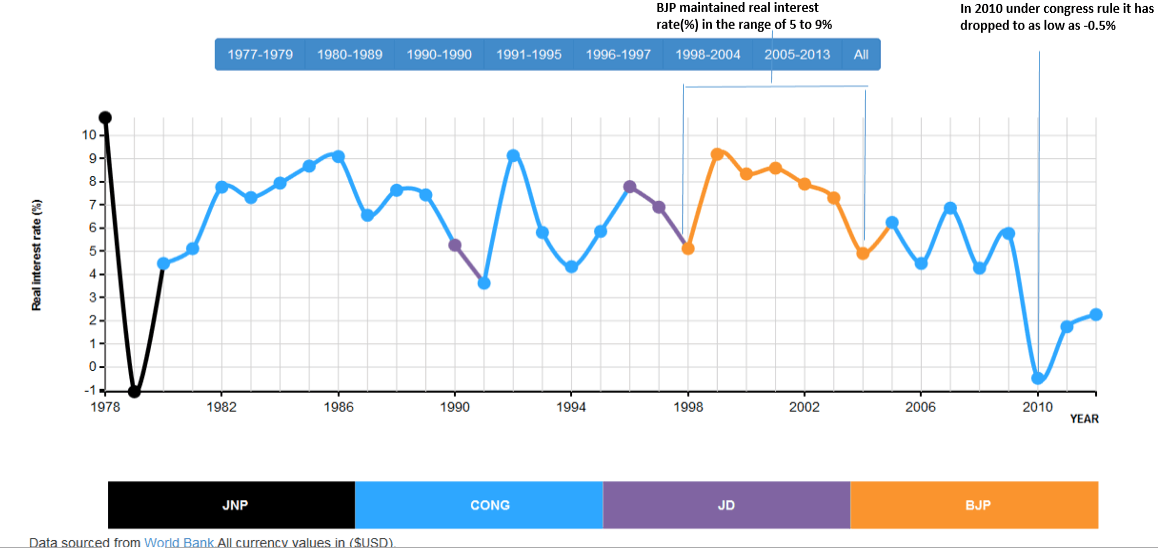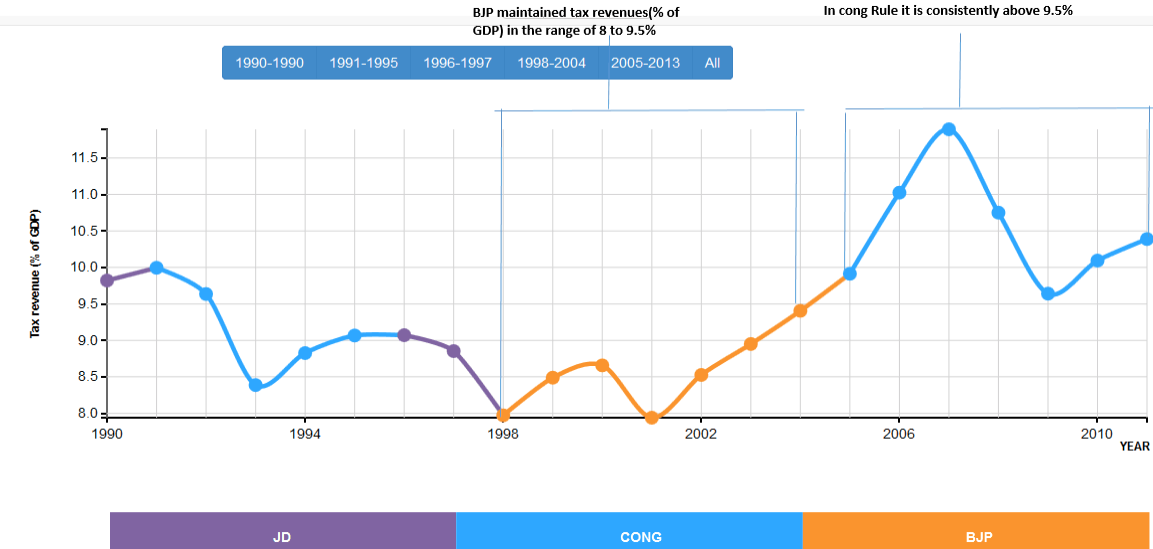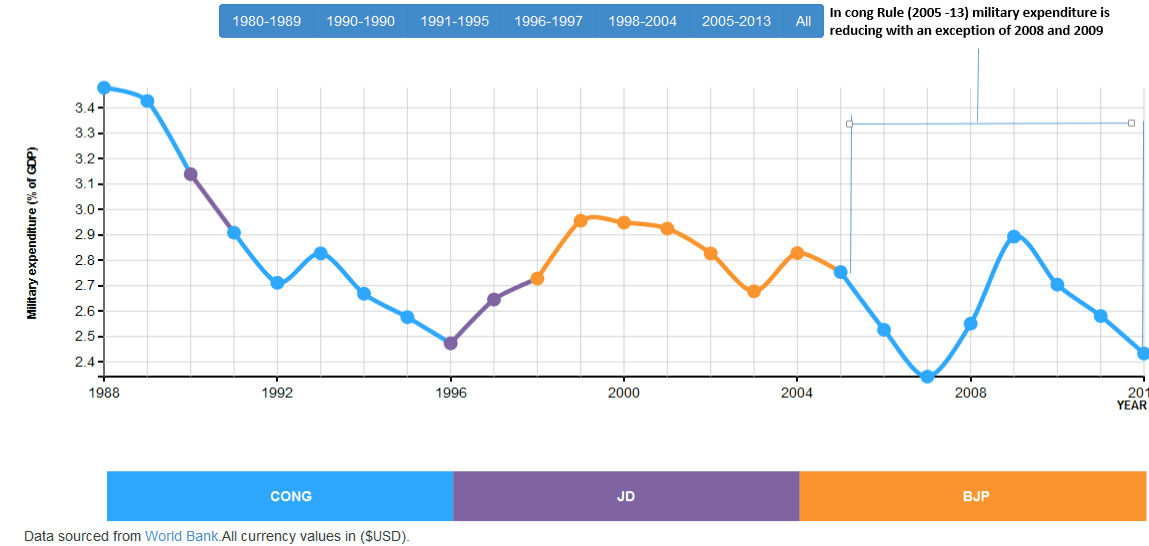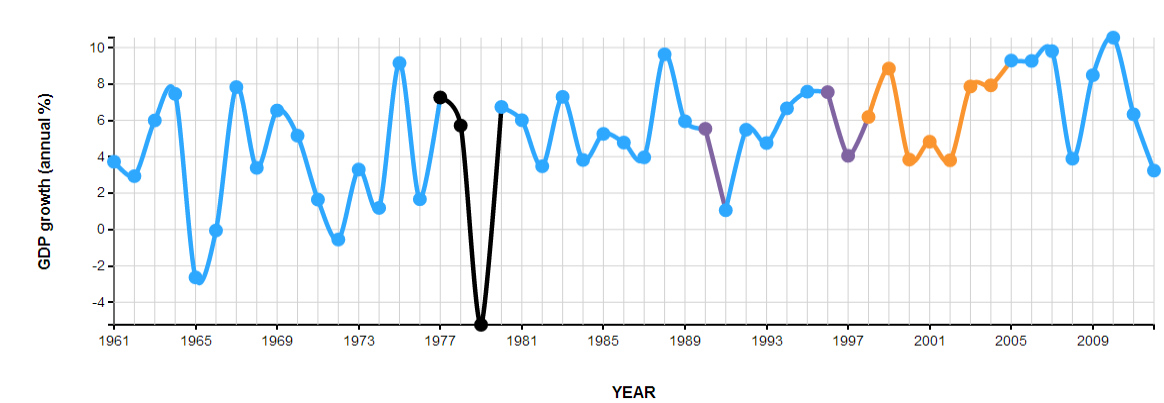For measuring a company performance “Return on equity” is a primary metric. But for measuring a government’s performance, there is no similar metric. Traditionally Indian elections are contested by parties based on social aspects like caste, religion, etc. as well as basic amenities like food, clothing and shelter. In the current scenario, the economic condition may also affect the party’s popularity and influence voters. Though there are large number of economic variables, we have observed that NDA has managed certain variables well and UPA has managed certain variables well during their rule.
For example, BJP was able to maintain a constant inflation-rate at higher real interest rates and lower tax revenues as % of GDP.
Inflation – consumer prices %
Real interest rate %
Tax revenues as a % of GDP
The Congress, on the other hand, focused and was successful in reducing military expenditure (except in 2008-2009), in increasing the FDI net inflows.
Military expenditure (as a % of GDP)
Foreign direct investment, net inflows (as a % of GDP)
But nether the Congress nor BJP could manage the fluctuations of GDP per capita growth rate and GDP growth rates.
GDP growth per capita (%)
GDP growth (%)
To see other metrics and make your own comparisons, visit https://gramener.com/election/govtperformance.

